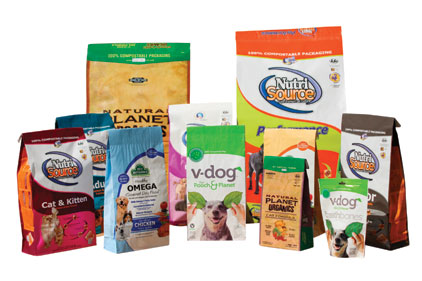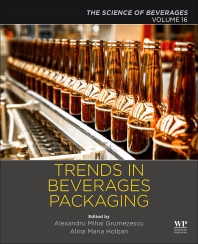Perhaps for the first time in the history of packaging, the will to develop sustainable packaging practices is something that’s shared by both consumers and industry professionals alike.

|
| While consumers' demand for sustainable packaging grows, so does the ability to provide quality design and branding. Shown here is a group of Precision Color Graphics Ecoterah pet food packaging. |
The process of creating packaging material today bears little resemblance to what was commonplace just five short years ago. How is it different? A closer look at three emerging trends from three aspects of that production process provides the answer.
Trend 1: Customer Demand for Sustainability.
Unprecedented customer demand for eco-friendly packaging is driving innovation and giving way to forward-thinking solutions. And the packaging industry is rising to the challenge. As a result, customers can shop responsibly, choosing packaging that demonstrates excellent shelf stability, but breaks down in a compost within 90 days. Among the options available to them is packaging that’s produced from natural products by marrying paper and film technologies, rather than petrochemicals or hazardous materials.
Most notably of all, they no longer have to go overseas for their packaging needs. And that’s important, because for these forward-thinking customers, a dollar well spent is one that’s invested in packaging that’s made in the United States.
Trend 2: Better Functioning Materials.
Responding to customer demand for eco-friendly packaging is an on-going process and one that has provided a number of challenges from the get go, especially when it comes to how sustainable materials like biopolymers perform during the manufacturing process.
Early-stage biopolymers did not machine well due to poor COF, or coefficient of friction, which made them tacky and prone to tears on the production line.
Working closely with the manufacturer, we shepherded the evolution of biopolymers that would perform better on forming ploughs to reduce tearing. We also sought to make the biopolymers softer and more subtle to the touch in order to reduce flex cracking – something that is of particular importance in the manufacturing of food packaging products in which a strong barrier is required to keep food fresh and improve shelf life.
Trend 3: Better Functioning machines.
In the printing and packaging industry, answering the call to provide more sustainable products has led to a number of unforeseen improvements in the manufacturing process.
One such improvement was discovered during the examination of seal characteristics. Switching from plastic packaging materials to bio-polymers, for example, meant that the package would seal at a lower temperature. This enabled machines to run faster and at lower temperatures. Improved speeds also meant improved through puts and less wear and tear on the equipment.
As these trends demonstrate, significant progress has been made in the production of sustainable packaging. Looking ahead, as more companies join in the effort to drive down costs while finding ever more innovative ways to meet the growing demand for eco packaging materials, this is one industry that is sure to continue to be globally competitive – and global-friendly – for many years to come.
Precision Color Graphics
(414) 209-0808; www.precisioncolor.com




